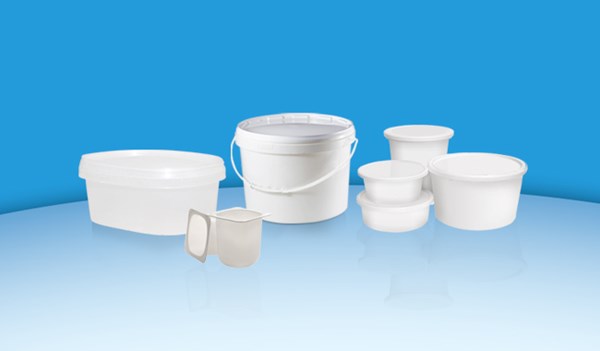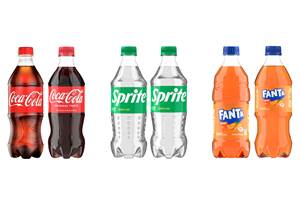The Verdict Is In: Brand Owners Want Recycled PP
The Association of Postconsumer Recyclers surveyed 21 consumer brand companies regarding the potential for PCR PP.
The Association of Postconsumer Recyclers surveyed 21 consumer brand companies regarding the potential for PCR PP.
Recycled PP could become a hot commodity. That’s according to a recent survey from the Association of Postconsumer Recyclers, which stated that demand for recycled polypropylene (PP) by major consumer brand companies is approaching 300 million pounds annually. The 21 major consumer brand companies who responded also provided quality and quantity information for potential PP PCR use in non-food contact applications. These companies alone identified demand of more than 280 million pounds of the recycled resin annually.
The study was an effort to identify market demand for PCR PP in the current market climate. “We recognize the combination of factors impacting the current market for recyclables, however consumer brand companies specifically outlined potential demand for this material. The challenge remains providing recyclers the feedstock to meet that demand,” commented Liz Bedard, APR’s Rigid Plastics Recycling Program Director.
All respondents’ demand is current or within the next three years. The survey also provides information on qualitative PCR components such as melt flow index, odor, color and demand timeframe.
“APR’s two main goals are to increase supply and enhance the quality of the plastics recycling stream,” said J. Scott Saunders, general manager of KW Plastics and chairman of APR. “Through work to achieve those goals, The APR Rigids Plastics Recycling Program and the Polypropylene Market Development Subcommittee have become one of the primary drivers to move the marketplace forward through stimulating growth and increasing availability and use of polypropylene PCR.”
Applications for polypropylene PCR include tubes, rigid packaging, closures, containers, pails, crates, disposable cutlery, pallets, hangers and tubs. Full survey results are available on the APR website.
Julie Zaniewski, packaging sustainability manager at Unilever, participated in the survey and provided her company’s perspective. “Unilever recognizes that recycling is one of the most effective ways to sustain the environment. As part of the Unilever Sustainable Living Plan, we are committed to increasing recycling rates and improving the availability of postconsumer materials, such as polypropylene. Recycled polypropylene is an important material with massive opportunity in a circular economy. Working in partnership with industry, we aim to increase the recycling of polypropylene and increase the recycled material content in our packaging to maximum possible levels, catalyzing the industry and further reducing our impact on the environment.”
The topic of PP PCR has come up quite a bit in some of the various conferences I’ve attended this year (The Recycling Conference, ReFocus).
For instance, during The Recycling Conference, Steve Sikra, materials science and technology manager at Procter & Gamble, said brand owners do indeed want to use recycled PP. Currently, P&G uses about 550,000 tons of virgin PP /yr, but looks to incorporate more recycled PP. By 2020, the company plans to double the use of post-consumer recycled content in plastic packaging.
“Let’s face it, pricing is always a challenge for us, but so is doing the right thing,” he said. “P&G has publically stated these goals and we are going to do that. The drive to use PCR is very real, and specifically in PP, there are a lot of potential applications.”
And while this study focused on potential PP PCR use in non-food contact applications, the food contact applications is also of interest to brands. For instance, I talked extensively with Monique Oxender, Keurig’s chief sustainability officer, regarding the company’s shift to PP. She mentioned the following:
“In terms of recyclability, we also considered what really drives recovery. And we found it’s the value of the material. There has to be a healthy economic equation across the value chain in order for the material to be recovered. When we looked at the outlook for PP, we saw it is very strong, and there are folks that want that material. The demand for post-consumer reclaim PP is on the rise. In fact, demand seems to be outstripping supply.”
Ed. Note: Additive suppliers are taking note as well, witness this product introduction.

Related Content
Breaking the Barrier: An Emerging Force in 9-Layer Film Packaging
Hamilton Plastics taps into its 30-plus years of know-how in high-barrier films by bringing novel, custom-engineered, nine-layer structures resulting from the investment in two new lines.
Read MoreCoca-Cola’s Redesign of Small PET Bottles Pushes Lightweighting Below Prior ‘Floor’
Coca-Cola thought it had reached the limits of lightweighting for its small PET carbonated soft drink bottles. But a “complete redesign” led to a further 12% reduction.
Read MoreFor Extrusion and Injection-Blow Molders, Numerous Upgrades in Machines and Services
Uniloy is revising its machinery lines across the board and strengthening after-sales services in tooling maintenance, spare parts and tech service.
Read MoreMeasuring Multilayer Plastic Containers Made Easier With Today's Ultrasonic Gauges
Ultrasonic gauge technology has evolved to simplify measurement of very thin layers in plastic containers. Today’s gauges with high-frequency capabilities and specialized software can make multilayer container measurement quick and easy for ordinary users.
Read MoreRead Next
Making the Circular Economy a Reality
Driven by brand owner demands and new worldwide legislation, the entire supply chain is working toward the shift to circularity, with some evidence the circular economy has already begun.
Read MoreSee Recyclers Close the Loop on Trade Show Production Scrap at NPE2024
A collaboration between show organizer PLASTICS, recycler CPR and size reduction experts WEIMA and Conair recovered and recycled all production scrap at NPE2024.
Read MorePeople 4.0 – How to Get Buy-In from Your Staff for Industry 4.0 Systems
Implementing a production monitoring system as the foundation of a ‘smart factory’ is about integrating people with new technology as much as it is about integrating machines and computers. Here are tips from a company that has gone through the process.
Read More













